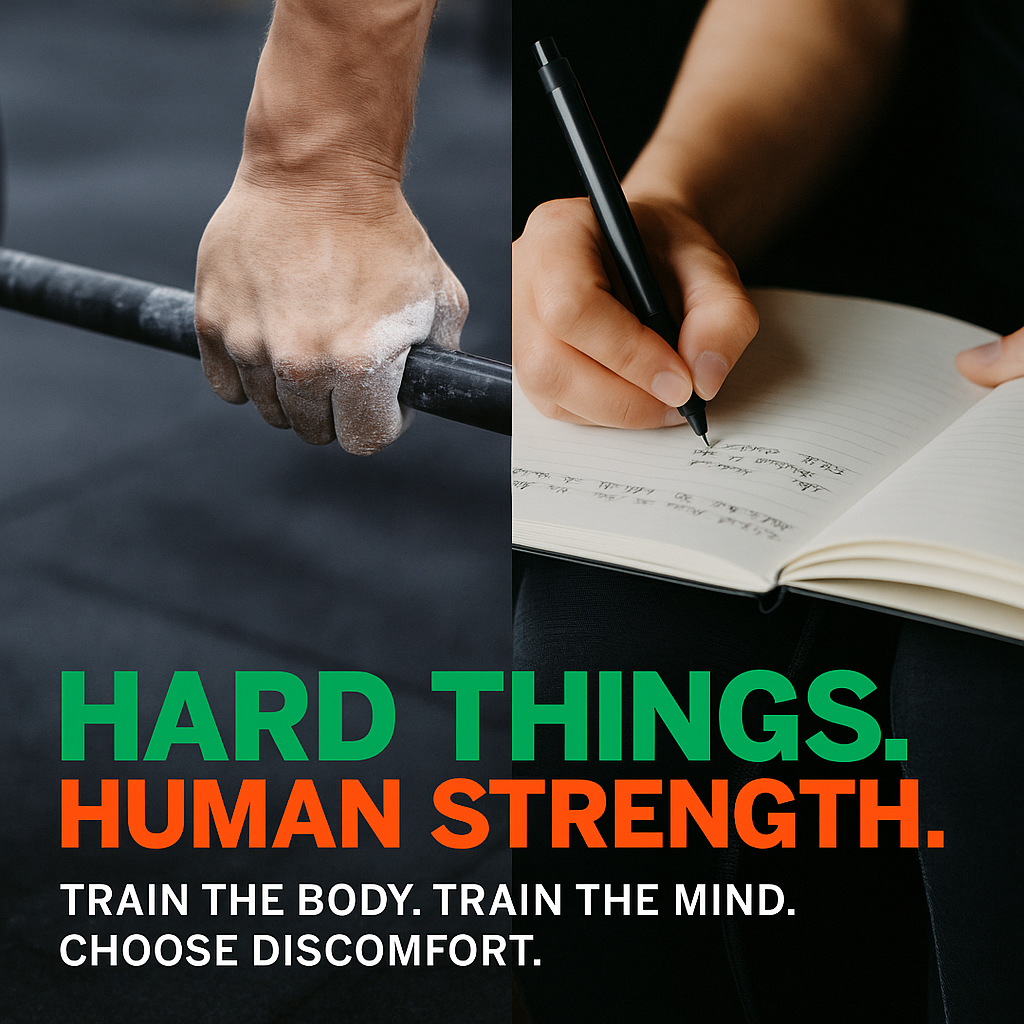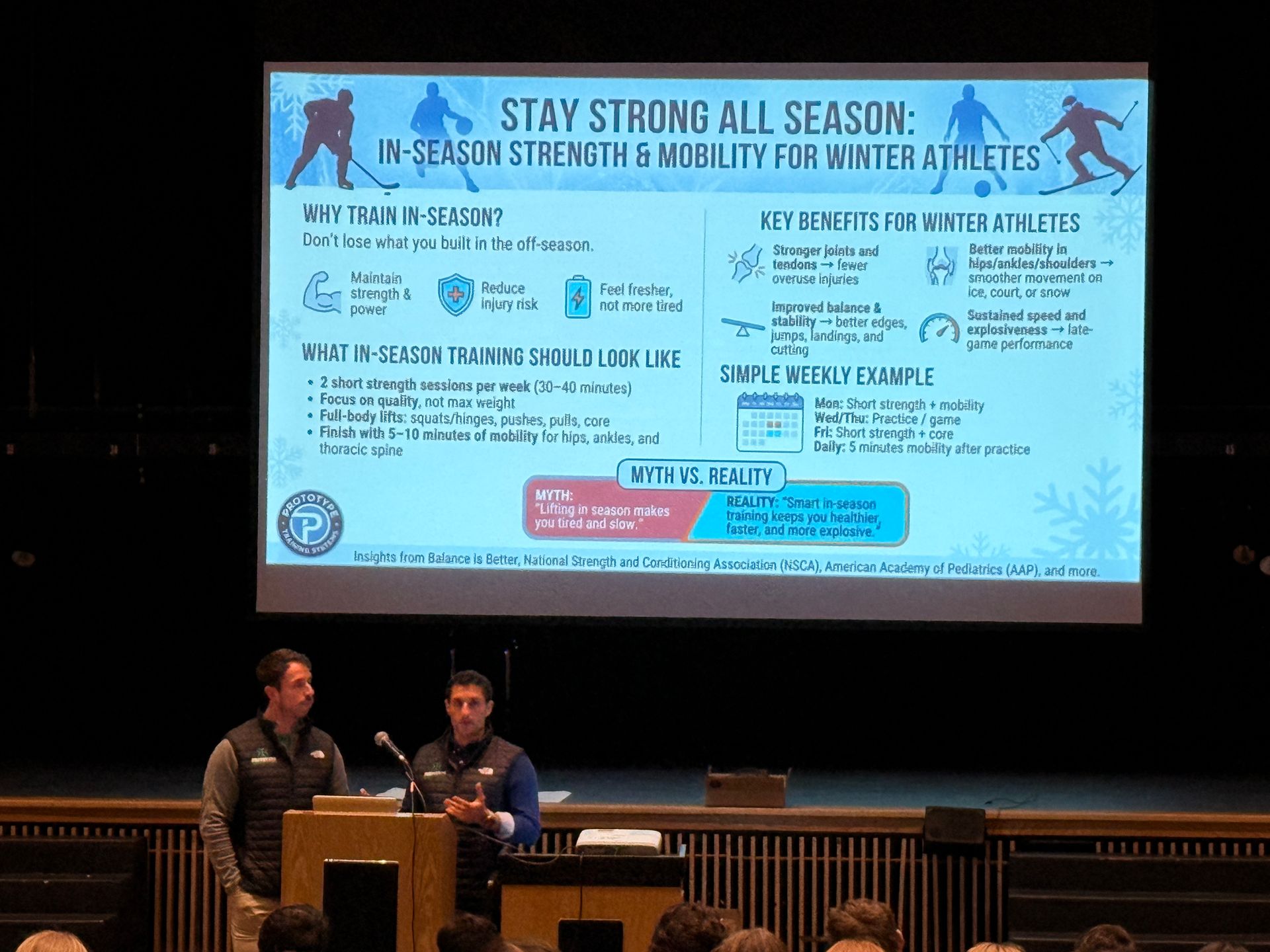Why We Avoid Mental Pain (And What Happens When We Don’t)
How choosing discomfort—physically and mentally—can change your brain and build real resilience

The Pain We Choose, and the Pain We Avoid
During today's 12pm CrossFit workout that had me gasping and grinding, a strange thought came to me:
Why is it that some pain we willingly walk into… and other pain we run from?
Take a hard workout. A cold plunge. Even something as extreme as natural childbirth (not that I know what this feels like!). These are intense, painful experiences. And yet, millions of people willingly choose them.
Why?
My theory is that we believe the pain
has a purpose.
Because we know it will
end.
And often, we trust there will be something
beautiful or
transformative on the other side.
But now compare that to a different kind of pain:
- The ache of grief.
- The sting of shame.
- The paralyzing fear of failure.
- The vulnerability of telling the truth.
This kind of pain?
We’ll do almost anything to avoid it.
Physical Pain Feels Safer — Because It’s Predictable
When you're in the middle of a tough workout, you might be suffering — but it's a kind of suffering you can frame.
You know it’s 5 more reps.
Or 2 more rounds.
Or 60 more seconds in that plunge.
It’s measurable. Time-bound. Finite.
You can see the finish line — and maybe even feel the reward coming: a rush of dopamine, pride, clarity.
This gives us psychological safety. We may be uncomfortable, but we’re in control.
Mental Discomfort Feels Scarier — Because It’s Ambiguous
But the pain of loss?
The feeling of being publicly judged?
The deep work of admitting you’ve messed something up or said something wrong?
That pain is
open-ended. It doesn’t punch in and punch out.
It’s socially risky. It feels unresolved. And there’s often no clear finish line.
So our brains do what they’re wired to do:
Avoid. Numb. Rationalize. Distract.
We’d rather sprint a mile with a weight vest than sit quietly with our own grief.
What Happens When We Deliberately Choose Discomfort
This is where things get interesting — and deeply hopeful.
Because both neuroscience and psychology say this:
Discomfort — when chosen deliberately and approached with intention — becomes a training ground for growth.
Let’s break that down.
Neuroscience: Pain, Dopamine, and Resilience
Dr. Anna Lembke, in Dopamine Nation, explains that pain and pleasure exist on the same spectrum. When we experience pain — whether physical or emotional — our brain compensates by releasing dopamine to rebalance the system.
This is why things like cold plunges, fasting, and hard workouts can lead to euphoria or a post-effort high.
The brain says: You did something hard and survived. Here's your reward.
But here’s the nuance:
The reward response is stronger when the pain is voluntary and meaningful.
There’s emerging evidence that emotional discomfort, when faced on purpose (like journaling about grief, having a hard conversation, or sharing publicly), may trigger similar neurochemical rebound effects — a sense of relief, strength, or grounded clarity.
Psychology: Exposure and Emotional Reps
From what I've learned talking with psychologists, cognitive behavioral therapists, and performance coaches, this is called
exposure work.
When someone faces what they fear — whether it’s a crowded room, a difficult memory, or public speaking — their brain gradually learns: This won’t kill me.
The anxiety response (amygdala activation) decreases over time.
You build tolerance. Just like building muscle under load.
Psychologists call this stress inoculation — the idea that controlled exposure to discomfort builds emotional and cognitive resilience.
Avoidance makes pain stronger.
Exposure makes you stronger.
The “Reps” Theory — Training the Mind Like a Muscle
Here’s the metaphor that ties it all together:
- You don’t deadlift 500 lbs on day one.
- You don’t run a marathon your first week.
- You build capacity through progressive exposure and rest.
The same is true for discomfort.
Every time you:
- Open up about something hard
- Sit with emotion instead of numbing
- Choose honesty over image
- Take a small risk in public
- Ask for help
- Say “no” or “I’m sorry” or “I don’t know”
You’re doing an emotional “rep.” And reps matter.
Pain ≠ Growth — Unless It’s Scaled
It’s important to say this:
Not all pain is productive.
Just like physical overtraining leads to injury, emotional overexposure can overwhelm the nervous system.
The key is deliberate, progressive discomfort.
Stretch — don’t snap.
Expose — don’t flood.
Choose challenge — not chaos.
Why This Matters
Because life will throw hard things at all of us — pain we didn’t ask for, didn’t see coming, and can’t control.
But if we’ve trained — physically and mentally — to sit with discomfort, to breathe through uncertainty, and to take action anyway…
Then we meet those challenges differently.
We become anti-fragile — not immune to pain, but transformed by it.
Final Thought
The body adapts to stress.
So does the mind.
So does the spirit.
Discomfort is a teacher — if you’re willing to learn from it.
So the next time something feels hard — emotionally, physically, relationally — pause before avoiding it.
Ask yourself:
- What if this is a rep?
- What if there’s something on the other side?
- What if this discomfort is training me for what’s next?
You don’t need to seek pain for its own sake.
But when discomfort shows up — or when you feel called to challenge yourself — know this:
It’s not just pain.
It’s practice.
Citations & References
You can include these in a footnote or references section of your blog:
- Lembke, A. (2021). Dopamine Nation: Finding Balance in the Age of Indulgence. Dutton.
- Discusses the dopamine-pain-pleasure balance and how deliberate discomfort can recalibrate the brain’s reward system.
- Easter, M. (2021). The Comfort Crisis: Embrace Discomfort to Reclaim Your Wild, Happy, Healthy Self. Penguin Random House.
- Explores how modern comfort is making us fragile and how physical and mental challenges increase vitality and resilience.
- Stulberg, B., & Magness, S. (2017). Peak Performance: Elevate Your Game, Avoid Burnout, and Thrive with the New Science of Success. Rodale Books.
- Introduces the concept of “productive discomfort” and stress + rest = growth framework.
- McGonigal, K. (2015). The Upside of Stress: Why Stress Is Good for You, and How to Get Good at It. Avery.
- Details the concept of stress inoculation and how reframing discomfort builds strength.
- Hayes, S. C., Strosahl, K. D., & Wilson, K. G. (2011). Acceptance and Commitment Therapy: The Process and Practice of Mindful Change. Guilford Press.
- Foundational text on psychological flexibility, exposure to emotional discomfort, and intentional suffering for growth.
- LeDoux, J. (2015). Anxious: Using the Brain to Understand and Treat Fear and Anxiety. Viking.
- Explains the neuroscience of fear, amygdala habituation, and emotional exposure therapy.
- Siegel, D. J. (2012). The Developing Mind: How Relationships and the Brain Interact to Shape Who We Are. Guilford Press.
- Discusses neuroplasticity and how the mind rewires through repeated emotional experiences.
- Sapolsky, R. M. (2004). Why Zebras Don’t Get Ulcers: The Acclaimed Guide to Stress, Stress-Related Diseases, and Coping. Holt Paperbacks.
- Breaks down the physiology of stress, chronic discomfort, and its management.
Previous Blogs


Climb to New Heights
Prototype Training Systems is more than a gym - it is a lifestyle. Join us today!


